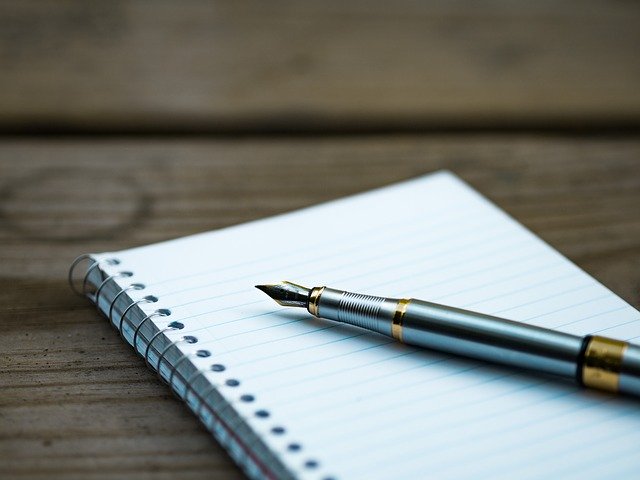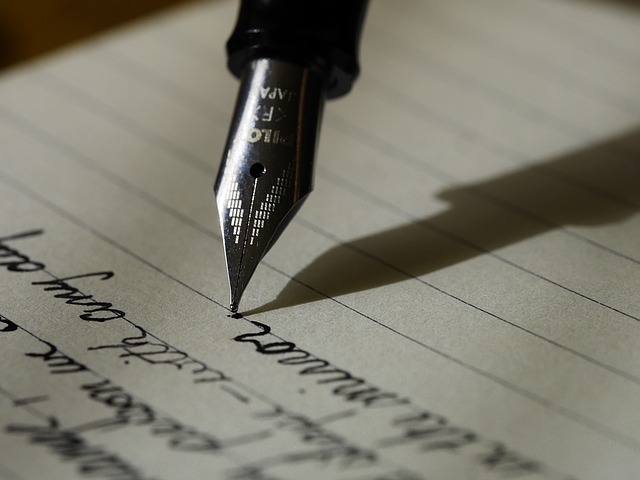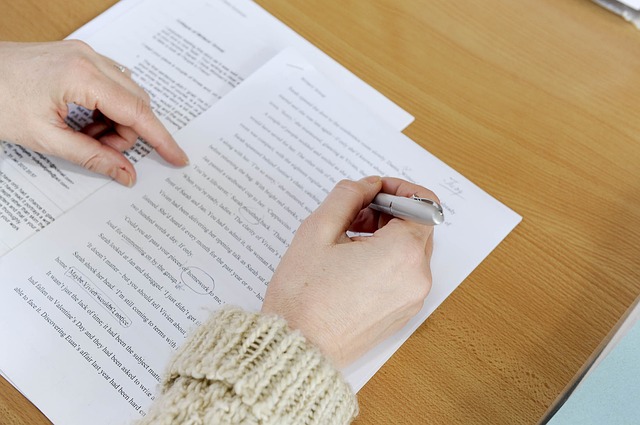Although some scholars and students use the terms interchangeably, editing and proofreading services are two different stages of the revision process. Both services use different methods and center on different aspects of the writing, but both require close and careful reading. They produce different outcomes for writers. However, both proofreading and editing must improve the quality of the written work.

As we discussed in one of our previous articles, most researchers and students are unsure about the difference between editing and proofreading services. Although some researchers and students use the terms interchangeably, editing and proofreading services are two different stages of the revision process. Both services use different methods and center on different aspects of the writing, but both require close and careful reading. They produce different outcomes for authors. However, both proofreading and editing must improve the quality of academic work.
The purpose of the proofreading service is to correct all errors in grammar, syntax, punctuation, and spelling in a manuscript. If you wish to see whether the final version of your document contains any errors of these types, then you need proofreading services instead of editing services. As we discussed on our academy page earlier, one of the purposes of the editing service is also to correct all errors in grammar, typography, punctuation, syntax, and spelling in a manuscript. In this sense, the editing service includes the proofreading service as well. Nevertheless, strictly speaking, proofreading is the final stage of the editing process before the document is delivered to you. Therefore, even if an editor has corrected many of the errors that a proofreader would normally correct, the document must still pass through this proofreading stage.
Proofreading focuses on errors, such as misspellings and mistakes in grammar and punctuation. A text should be proofread only after all the other editing revisions have been done. Proofreading is one of the basic procedures carried out on a text to render it flawless. This procedure requires extensive knowledge and comprehension of the workings of the language to correct a manuscript. Hence, the task of proofreading requires language expertise to detect and correct errors in grammar, punctuation, syntax, spelling, and vocabulary.

Good manuscripts always pass through revision and improvement. These are fundamental components of the writing process. Writers should use proofreading services to be sure that their manuscripts are error-free. The main objective of proofreading is to guarantee that a paper is flawless. Therefore, a proofreader makes a complete assessment and comprehensive improvement of a manuscript. In this sense, proofreading is the final stage of the writing process. It is important to highlight here that just because it is the last step, it does not mean that it is the least important. To ensure perfection, it verifies accuracy in sentence structure, grammar, homonyms, punctuation, spelling, capitalization, internal consistency, numeration, and even pagination.
Most researchers devote very limited time to proofreading and hope to detect any surface errors that jump out from the text. However, a scanning or superficial reading, particularly after an author has been working long and hard on a manuscript, usually fails to catch all errors. So, proofreading requires working with a definite plan that helps a proofreader to search systematically for specific kinds of errors. Of course, it requires extra effort and a little extra time, but it is worth it because this makes the entire writing process more efficient.
It is important to keep the editing and proofreading processes separate. When editors are editing an initial draft, they do not want to be bothered with thinking about other issues, such as grammar, homonyms, punctuation, spelling, capitalization, and numbering. If the assigned editor has to worry about the spelling of a word or the placement of a full stop, comma, or brackets, they will not be able to focus on the more important task of developing and connecting ideas.
A proofreader needs a proper strategy for spotting errors. Proofreading is a learning process, and proofreaders are not just looking for errors that they recognize; they are also learning to recognize and correct new errors. That is why they need a systematic strategy.
Spotting errors is the first step of the best proofreading. If it is going to be your first step, then it is essential to concentrate on this proofreading tip. Get away from all distractors, such as mobile gadgets (cell phones, tablets), TV, and the Internet (except for use of online resources in the proofreading process).

Pick one common error at a time and fix it first. Because it is easier for the brain to focus on one specific issue at a time, and you are less likely to miss any error. Sometimes it could be best to begin with the formatting of the text as a starting point of proofreading. Make sure that the formatting agrees with the requirements. If you do many things at once, you risk losing your concentration, and your proofreading may be less effective. Besides, it is easier to catch grammar errors if you do not check, say, punctuation and spelling at the same time.
This technique is especially helpful for checking spelling. You can start with the last word on the last page of the paper, work your way back to the beginning of the text, and read each sentence and word carefully. You should do that because all errors in grammar, punctuation, and the content of the manuscript will not make any sense, and you will be entirely concentrating on the spelling of each word. This will help you avoid becoming distracted by content issues.
When you have finished with the proofreading, print out the paper, and read every word slowly. Reading out loud forces you to say each word and also lets you hear how the words sound in your sentences. If there are errors that you have missed on the screen, you will spot them in your readout of the text. Moreover, reading the paper aloud will allow you to spot more errors. When a sentence sounds incorrect, go back to the text, and if there are errors in the sentence, correct them.
It is important to read every word slowly because when you read silently or too quickly, you might skip over errors or make unintentional corrections.
Besides, making some distance between you and the text would be helpful. It would be difficult to edit or proofread a text that you have just finished writing because it is still familiar, and you may, therefore, still miss a lot of errors. Thus, putting the document aside for a while would facilitate spotting the errors. You might go for a walk or take a short trip to the beach. Make sure you have cleared your head of what you have written so far. Then take a fresh look at the text and see what is really on the page.
When concentrating on the words, do not ignore the punctuation marks. This is one of the most important proofreading tips for academic writing.
Watch out for commas, quotation marks, apostrophes, colons, semicolons, and so on, to ensure that they are used correctly.
Stop at every punctuation mark to make sure you have used them properly.
People usually make mistakes with the apostrophe, mixing ‘‘their” and ‘‘they’re”, ‘‘your”, and ‘‘you’re”, and ‘‘its” and ‘‘it’s’’, and so on. One golden rule of proofreading: Never use an apostrophe to form plurals, for example, in 3’s, do’s, don’ts, and CEO’s. The correct forms are 3s, dos, don’ts, and CEOs.

This technique allows you to read every sentence very carefully. Separate your text into different parts, then read each sentence and check for errors in grammar, punctuation, syntax, or spelling. If you are working with the hard copy of the document, you can use a highlighter to separate the line on which you’re working.
Best Edit & Proof’s proofreaders and editors aim to provide your manuscript with proper scholarly and academic tone and style. They will improve significantly the chances of having your research manuscript accepted for publishing. Our doctorally qualified editors provide subject-matter proofreading and editing services in a number of fields categorized under various disciplines. Having considerable knowledge and expertise, they will help you find the right tone and style for your paper.
If you need Best Edit & Proof expert proofreaders and editors to format your academic manuscripts, or to give you the fundamental rules for formatting your academic manuscripts as described in your guidelines, such as MLA and APA styles, then contact us. At Best Edit & Proof, our proofreaders and editors edit every type of academic manuscript.
If you would like our language and subject-matter experts to work on your project and improve its academic tone and style, then please visit the order page. We have a user-friendly website and our ordering process is simple. It’s easy! It takes only a few minutes to submit your manuscript and complete the process. Click here to see how it works.

We have flat-rate pricing based on the type of service, word count, and turnaround time. Enter your word count or copy and paste your document into our pricing calculator to get an instant quote.
If you need support for editing and proofreading services, contact us. You can also e-mail us or use the 24/7 live chat module to get direct support. We have a 24/7 active live chat mode to offer you direct support along with qualified editors to refine and furbish your manuscript. Alternatively, you can text us through our WhatsApp business line.
Follow us on Twitter, LinkedIn, Facebook, Instagram, and Medium.
For more posts, click here.
This article is a discussion of proofreading versus editing and provides details about what proofreading is. To give you an opportunity to practice your proofreading, we have left a few spelling, punctuation, or grammatical errors in the text. See if you can spot them! If you spot the errors correctly, you will be entitled to a 10% discount.
How Much Do Professional Editing and Proofreading Cost?
01.02.2022
How Much Do Proofreading and Editing Cost?
19.06.2021
How to Choose a Dissertation Editor in 3 Steps
23.05.2022
8 Proofreading Tips: Everything to Understand the Process
30.04.2022
Dissertation Proofreading: Four Easy-to-Follow Steps
28.04.2022

Proofreading improves your writing, and it is a highly crucial step for a perfectly written academic paper. It necessitates a broad-ranging comprehension to fix a paper excellently and requires English proficiency to identify and correct errors. When you want to ensure that your paper is error-free in terms of grammar, punctuation, spelling, and formatting, you need a proofreading service.
Continue Reading
Anyone who is in the academic world or the literary profession, in general, can vouch for the importance of editing and proofreading services. However, as important as they are, it takes time to master them. You need a certain talent and experience to call yourself a good editor and proofreader. However, as they say— practice makes you perfect. Along with that, we have here a few tips and tricks that will help you speed up the process. With these, you can soon shine out in the field of editing and proofreading.
Continue Reading
Ever wondered how your favorite books are written, compiled, and presented to you? Of course, the writer is the captain of the ship, but there are numerous phases to how a book is compiled and published. One of the main phases is the editing and proofreading phase. That’s right — all the books that you have read to date are all edited and proofread several times before they get the final nod of approval for publication. This article discusses the process of editing and proofreading services for books. We will also focus on why editing and proofreading are important and why you should pay close attention to them.
Continue Reading
To err is human, and the same applies to the field of editing and proofreading. No matter how much of an expert you are or how much experience you have, you are bound to make mistakes. Especially for a field like this, where you need to be meticulous, it is natural for you to miss out on words or make some typing errors. This article is more targeted toward people who are new to editing and proofreading and want to avoid making mistakes.
Continue Reading
For academic achievement, staying ahead of the pack is always a crucial issue. Taking advantage of professional academic editing and proofreading can help you reach your potential and increase chances of your work being published in professional journals. It requires a broad-ranging comprehension to fix a document exceptionally. Therefore, academic editing and proofreading are a critical part of the writing process.
Continue Reading